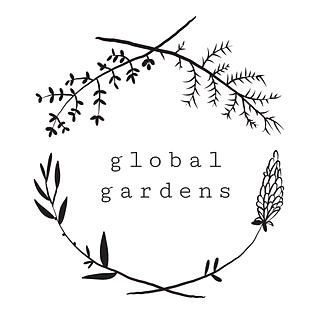EXPLORATIONS IN COLOUR
- Global Gardens
- Dec 7, 2022
- 2 min read
By Brynn Copnall
What beauty surrounds us every day that we never see? This project became a celebration of the beautiful that’s that surround us in plants; and the food, pollen, habitat and oxygen they gift us.
Looking at the traditional non native plants that have been brought to our island thousands of years ago through trade and rediscovering the hidden qualities of our precious native plants. At global gardens we make an effort to grow native plants for soil health and habitat regeneration. We also grow heritage varieties of plants like our dye patch with madder, weld and woad. We wanted to show how these plants on a community garden don’t have to out compete but support each other and the land around them.

Above: us preparing our designs to be rolled up and put in jam jars in the compost
For this workshop we did bundle dyeing, an easy and accessible type of dyeing. Here you can see food waste like red onion skins and native plants like yarrow and tansy. All these materials are a natural part of our urban environments now.

Above: the jam jars of dye coming out of the compost
We used composting woodchip to provide the heat needed to transfer the colour from the plants to the fabric. We left them for a couple of months over the end of the summer to get nice and hot. This was a long slow process reminding us to slow down sometimes and let things take the time they need to develop and grow.
Even though we counted in the jam jars, we still lost three! A little surprise for later

Opening up the jam jars was a bit of a gunky smelly job but very rewarding and lots of fun!
We had some wonderful surprises from our native plants that are not as well documented in dyeing and are being rediscovered by natural dyers across the uk.

Yarrow, one of the most wonderful medicinal plants and a favourite of pollinators, gave us a beautiful soothing yellow!
The process was full of lovely surprises like this madder hidden aWe also look at the opportunity to do some open fire dyeing led by the lovely Cat Lewis who often runs textile workshops at the gardens that everyone should make sure to keep an eye out for!

The number of colours and colours and tones built up from the plants in the gardens and waste food from the cafes near us was astounding. They might all look like shades of brown when you see them up close they are full of surprises.

The dyed samples have been turned into bunting and put on display for our autumn festivities at the gardens. They will now live there until the colours fade and the fabric begins to break down again into the earth.
Everyone is more than welcome to visit on one of our open days or join a volunteer session to come and see the colours our garden can make.
Many thanks to Grow Wild project for the opportunity to run these workshops.












Comments